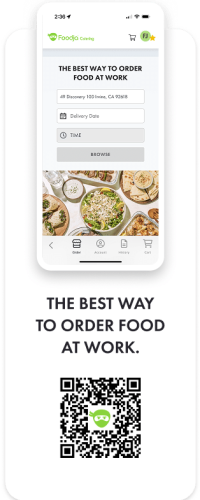Consumer cutbacks affected the food service industry in 2024. In a Consumer Price Index Summary report from the U.S. Bureau of Labor Statistics, the price of food has increased 2.5% overall year-over-year (YOY) largely due to the increase in price on food away from home. Consumers are paying approximately 3.4% more at restaurants as of January 2025.
Quick service restaurants are among the most affected by price increases. Same-store traffic dropped 2.5% YOY according to a Black Box Intelligence review of restaurant industry trends from October 2024. While consumers are paying more (an average check growth of 3.1%), they are visiting restaurants less frequently.
To make up for the lower store traffic, many Quick Service Restaurants (QSRs) have relied heavily on third-party office delivery platforms. Third-party office delivery platforms, like Foodja, provide opportunities for new promotions and extended exposure to consumers that restaurants may not normally reach.
Understanding how to leverage third-party office delivery platforms can help QSRs achieve growth over the next year. Here are five ways QSRs can do just that:
1. Understanding the impact of third party office delivering platform positioning
Strong visibility on any third-party delivery platform is key to success. Position within delivery carousels depends on several metrics, including speed of delivery and customer ratings. The best performers receive prime spots, gaining more visibility and attracting more orders. On the other hand, restaurants with poor performance can get pushed lower in the rankings.
2. Prevent order cancelations
Order cancellations disrupt a restaurant’s third-party office delivery platform performance. Major culprits that cause cancellations include inaccurate operating hours, outdated menus, and delays in order confirmation. Maintaining a low cancelation rate is essential to staying competitive.
Foodja provides restaurants with an online portal where they can confirm their hours and menus are accurate. In addition to confirming orders through the portal, restaurants can sign-up to receive text messaging and email notifications for all incoming orders.
3. Avoid pricing mismatches
Food pricing has increased YOY. Consumers are looking for value when ordering their meals. According to a Reputation Report by Chatmeter, customers have expressed frustration over increased prices but are more frustrated with getting overcharged for items they feel should be included, like eating utensils.
4. Avoid avoidable wait-time
Avoidable wait time refers to the additional time drivers spend waiting after the preparation time is set. For example, if a restaurant confirms that an order will be ready in 15 minutes, but it takes an additional 5 minutes, then drivers may not reach the customer on time, negatively affecting customer ratings and incurring penalties from third-party office delivery platforms.
In today’s fast-paced work environment, enhancing the third-party delivery experience isn’t just a nice-to-have—it’s a competitive advantage. By streamlining operations, improving communication, and prioritizing food quality and timeliness, restaurants can grow their business through recurring corporate catering. Choosing the right third-party office delivery platform is crucial in providing an exceptional corporate catering experience. The right platform doesn’t just deliver food; it delivers repeat orders and helps customers discover your restaurant to enjoy with their friends and family. Ready to elevate your corporate catering experience?




